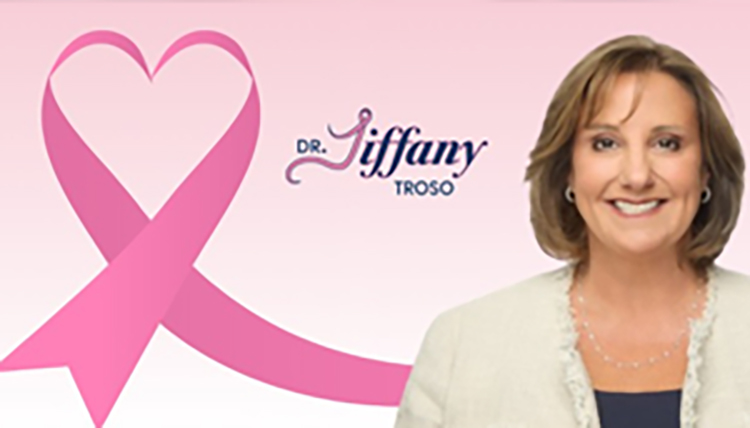Last month, a woman named Jennifer consulted with me to discuss her treatment options for metastatic breast cancer. Her current therapy wasn’t working as well as had been expected. I reviewed her past treatments and mentioned a clinical trial that might be a good option for her.
Her face changed immediately. “Isn’t that just experimenting on people? I don’t want to be a guinea pig!”
Jennifer is hardly alone. I frequently have this exact conversation. And every single time, I think about the irony. The drug that saved my last patient’s life? It came from a clinical trial. The immunotherapy that’s given dozens of my patients years they wouldn’t have had otherwise? Clinical trial. The targeted therapy Jennifer herself received when she was first diagnosed? You guessed it.
The Reality Behind the Fear
Nearly every effective cancer treatment we have today went through clinical trials. While some older drugs were introduced before our current trial system existed, the treatments you’re most likely to receive have all come through the rigorous clinical trial process. Targeted therapies, immunotherapies, modern chemotherapy combinations, and new surgical techniques all went through this careful testing.
But here’s the sobering reality: only 3 to 5% of adult cancer patients in the United States participate in clinical trials, according to data from the National Cancer Institute. That number has barely budged in decades. Meanwhile, surveys consistently show that most people view clinical trials with suspicion, associating them with unethical experiments rather than rigorous scientific progress.
The gap between perception and reality is huge, and it’s costing patients potentially lifesaving options.
Addressing Your Biggest Fears
Let me address the specific fears I hear most often, because they’re based on misunderstandings about how modern cancer trials work.
“I’ll get a placebo and no real treatment.”
In cancer clinical trials, you almost never receive a placebo alone. You are not going to be randomized to receive a sugar pill while your cancer goes untreated. What actually happens? You receive either the current standard treatment, the standard treatment plus the new drug being tested, or the new treatment compared against the standard. The only time you might receive a placebo alone is when the accepted standard of care is no treatment, such as in certain maintenance settings after active therapy has finished.
“They’ll experiment on me without caring if I live or die.”
Every clinical trial must be approved and monitored by an Institutional Review Board (IRB), an independent committee whose only job is to protect research participants. Additionally, most trials have a Data Safety Monitoring Board that reviews safety data throughout the trial and can stop it immediately if they see concerning patterns.
“I’ll be trapped with no way out if things go wrong.”
You can leave a clinical trial at any time, for any reason, without penalty. This right is explicitly stated in the informed consent document you sign before enrolling. Your relationship with your oncologist doesn’t change.
A Treatment That Changed Everything
Let me tell you about Herceptin. In the early 1990s, if you were diagnosed with HER2positive breast cancer, your prognosis was grim. This subtype was more aggressive, spread faster, and killed faster.
The first Phase 1 trial of trastuzumab (Herceptin) started in 1992. Fifteen women enrolled to test if this drug was safe and what dose might work. Phase 2 trials expanded to more patients with promising results. In the Phase 3 trial published in 2001, researchers compared chemotherapy alone versus chemotherapy plus Herceptin. The results were stunning: adding Herceptin reduced the risk of death by 20%.
Today, if you’re diagnosed with HER2-positive breast cancer, you receive Herceptin as standard care. Every single patient who benefited from Herceptin in those early trials was told it was experimental. They had to decide whether to trust the science and take the risk. Because they did, thousands of women are alive today who wouldn’t be otherwise.
Your standard of care today was someone else’s experimental treatment a decade ago.
What Clinical Trials Actually Are
Clinical trials move through phases, and understanding these phases helps you evaluate what you’re being offered.
Phase 1: Is it safe? What’s the right dose? These trials enroll small groups, usually 20 to 80 people, testing a new drug or treatment in people for the first time. Patients who join Phase 1 studies have usually finished standard options and want to try a new approach.
Phase 2: Does it work? Once a safe dose has been found, researchers move to Phase 2 to see how well the treatment works. These studies often enroll 100 to 300 participants. Doctors measure tumor response, monitor side effects, and see whether the treatment improves outcomes.
Phase 3: Is it better than what we currently have? These are the big trials, often thousands of patients across multiple sites. Phase 3 studies compare the new treatment with the best proven therapy currently available. No one receives less than what would be offered outside a trial.
Most trials you’ll be offered are Phase 2 or Phase 3 trials where substantial safety and effectiveness data already exist.
The Safety Net You Don’t See
Every clinical trial operates within layers of protection. Before a trial even opens, an Institutional Review Board reviews the protocol. This independent committee of doctors, scientists, ethicists, and community members can reject trials they think are too risky or poorly designed.
You’ll receive a detailed consent document explaining everything about the trial. You can take it home, ask questions, and take weeks to decide. Nobody should rush you.
During the trial, a Data Safety Monitoring Board watches the data closely. If safety concerns emerge, they can stop the trial immediately. Any serious side effect must be reported to the FDA, the IRB, and the trial sponsor within hours or days.
Multiple studies have shown that trial participants often do as well or better than similar patients receiving standard care because they receive incredibly close monitoring, standardized care protocols, and immediate attention to any problems. You’re often more protected in a clinical trial than in routine care.
Access Remains Unequal
Understanding that clinical trials are safe doesn’t guarantee access. Approximately 70% of cancer patients live more than two hours from the closest academic medical center where most trials are conducted. Transportation costs, lodging, meals, time off work, and childcare create barriers that make participation impossible for many families. Clinical trial participation remains deeply unequal across racial, ethnic, and socioeconomic lines. These aren’t individual failures—they’re system failures that create deep inequities in who gets access to cutting-edge treatments.
What This Means for You
Clinical trials are how we make progress against cancer. When you enroll in a clinical trial, you’re a partner in advancing cancer care. You receive close monitoring, standardized treatment protocols, and you contribute to knowledge that might help thousands of people after you.
That doesn’t mean every trial is right for every patient. It means they deserve consideration as one option among others, evaluated on their merits against your alternatives. Asking about clinical trials doesn’t mean you’re desperate or out of options. It means you’re informed and want to explore everything available to you. That’s smart medicine.
When I tell you about a trial, it’s because I genuinely think it might be appropriate for your situation. These conversations are part of good cancer care. The choice is always yours. You can explore trials and decide they’re not for you. You can ask every question on your mind and take weeks to decide.
Jennifer’s Decision
That first conversation with Jennifer? After we talked through how clinical trials actually work, she asked to see the trial protocol. She took it home. She discussed it with her family. She called me with more questions.
Understanding the science and safety systems was her first step toward making an informed decision about her care. Because that’s what clinical trials really are— carefully designed studies with multiple safety protections, offering access to potentially better treatments while contributing to medical progress.
The next time someone mentions a clinical trial to you, I hope you’ll remember Jennifer’s story and ask questions instead of saying no out of fear. Your healthcare team should welcome these questions and help you understand all your options. That’s how good cancer care works.
Written By: Tiffany Troso, MD Medical Oncologist and Founder of Winning The Cancer Journey
http://www.linktr.ee/drtiffanytroso


